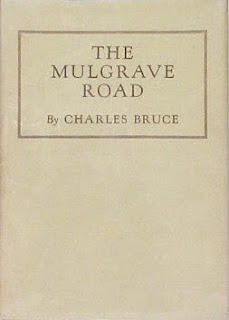 This was Joanna
This was Joanna
Niel [sic] H. Perrin [pseud. Danny Halperin]
Toronto: News Stand Library, 1949
Of all the novels read this past year, not one has left so great an impression as
Neil H. Perrin's The Door Between. In the
second of two posts about the book, I described it as "one of the most peculiar Canadian novels I've ever read". Here I reconsider:
The Door Between might well be
the most peculiar Canadian novel I've ever read. It's portrayal of 1948 Toronto as a dark, sexual sin city, populated by stricken, agonizing souls certainly runs counter to the staid and sober images that linger in popular culture.

These same sorry sods would find fit in
This was Joanna, which was published twelve months earlier. We never actually meet Joanna – she's found dead on page one by an unnamed fisherman, as depicted on the cover of the publisher's American edition: "...for one witless moment he looked down on the haunting perfection that was Joanna, the closed eyes in a kind of rapture, the long, strained throat, twisted torso, magnificent breasts, profound hips, proud legs, crouched in death like a supple cat."
Profound hips...
This is not the dead woman's story, rather it concerns an ex-lover, a nameless newspaperman who attempts to solve the mystery that was Joanna. His quest brings him into contact with her other past paramours. As with The Door Between, sexual disfunction and perversity pervade. We see this on Joanna's wedding night, as described by her husband Charles:
At last she stood nude before me. When I looked at her I was shocked to see the most brazen smile on her face.
Then, without hesitation, her fingers sure, carefully, slowly, she began to undress me. I went slightly hysterical then. I began to shudder to laugh, to giggle, to squirm. I simply went berserk. In the grip of nameless emotions that shook my whole body and dazed my mind I began to fight with her, to hit her, to drag her toward the bed.
What Joanna thought of this I don't know. We have never discussed it. I only know that later, all passion spent, as I lay beside her in the muttering gloom, I realized that on our wedding night I had gone mad, had beaten my wife and had virtually raped her.

Joanna never forgives Charles, whose desperate attempts to win her back render him a cuckold. The tryst with the newspaperman is just the first in a series of extramarital flings. It's with penultimate lover Ted Wrisley that Joanna's amorous adventures come to a climax. A sensualist who owes much to J.-K. Huysmans' Jean Des Esseintes, Wrisley introduces Joanna to "the arts of which immortal Ovid and the Marquis de Sade have written." He takes delight in showing his "chamber of horrors" to the newspaperman:
On the walls of the room were hung all sorts of gadgets of torture; long needles, small, hairy whips, knouts, knives sharp as razors, silken threads of unbelievable length. Over the mantlepiece were afixed two large peacock feathers; the end of one was a rubber stopper, the end of the other a handgrip. I dared not ask the significance of these feathers for fear of being told.
Suspended from the ceiling were two long cords, obviously used to hold a person up from the floor by his (or her) thumbs. On the floor, as if alive, lay the stuffed corpse of a sinuous cobra. The most unspeakably evil paintings adorned the walls and, in one corner of the room under a blue light, sat the grinning statue of Priapus, the phallic symbol of the ages.
This was Joanna was banned in Ireland.
Wrisley's playroom – which, incidentally, is soundproof – stands as Priapus in what is otherwise a remarkably flat environment. Like an American soap opera, This was Joanna is set in a neutral everyplace that is populated by the pampered and privileged. How bland compared to the torrid Toronto of The Door Between! I can't help but compare – had it not been for one I would not have read the other – and yet... and yet I still recommend the novel. This was Joanna might not be the most peculiar Canadian novel I've ever read, but it's up there.
Trivia: News Stand Library's American edition of This was Joanna, published in November 1949, two months after the Canadian, marks the last time the book saw print. Why Halperin's pseudonym was changed from Neil H. Perrin to Grant R. Brooks remains a mystery.
 Object:
Object: A mass market paperback that is typical of News Stand Library's shoddy production values. Streaks of black ink run along the edges of a dozen or so pages, making for challenging reading. The author's name is misspelled on the cover and title page (but is correct on the spine and back cover). "I before E, except after C", I suppose.
Access: Only the University of Calgary has copies (both the Perrin and Brooks editions). This was Joanna might be all but absent from libraries, but that doesn't mean it's expensive. Ten copies – all fairly decent – are currently listed online at between US$7.50 and US$30. One bookseller describes his offering as "a bit misscut [sic]". Par for the course, really.



























